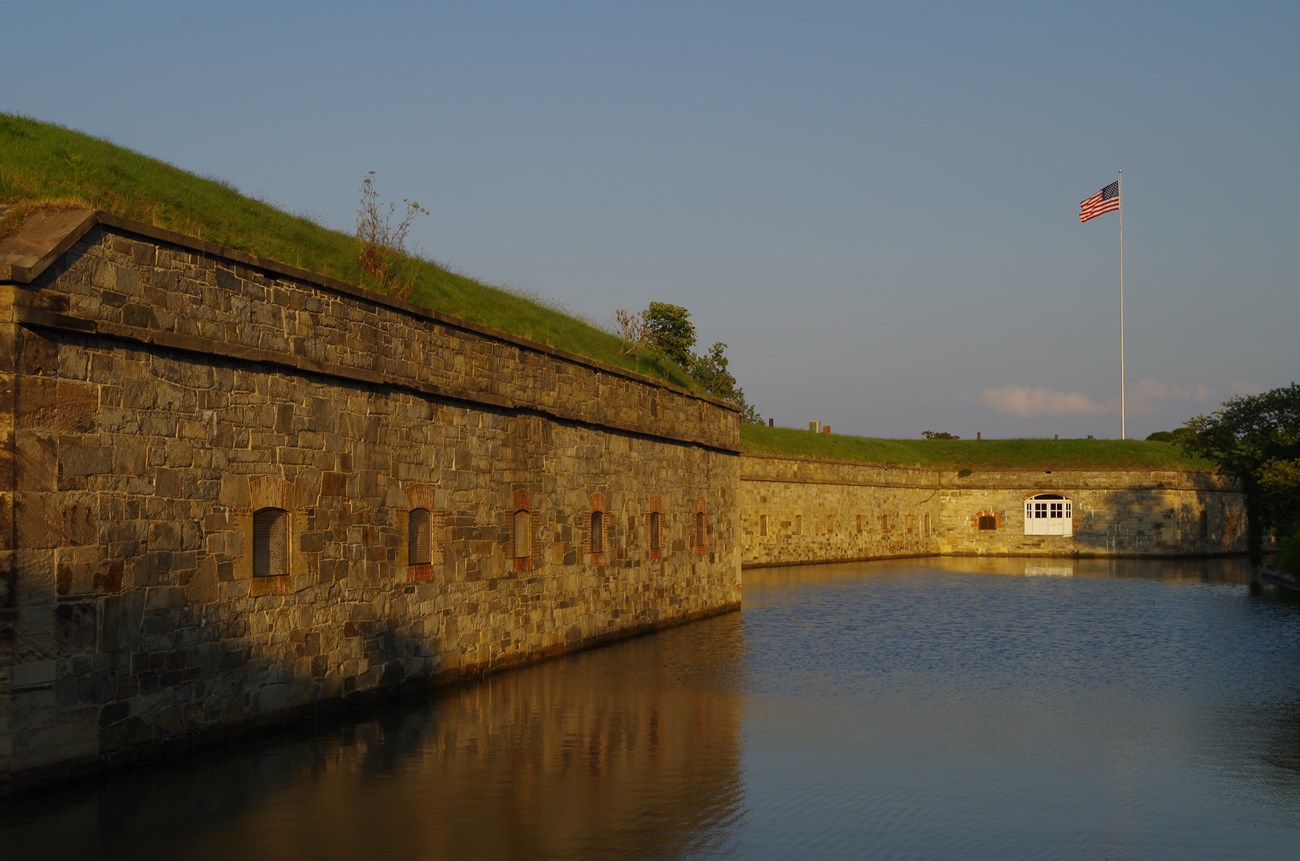Last updated: August 2, 2024
Article
Third System of Coastal Forts

NPS Photo
“By these fortifications, supported by our navy, to which they would afford like support, we should present to other powers an armed front from the St. Croix to the Sabine, which would protect, in the event of war, our whole coast and interior from invasion ; and even in the wars of other powers, in which we were neutral, they would be found eminently useful, as, by keeping their public ships at a distance from our cities, peace and order in them would be preserved, and the government be protected from insult.”
— President James Monroe, Second Inaugural Address, March 4, 1821
How should a country protect its borders? The United States had to consider this question when the War of 1812 ended in 1815. One year later, the federal government believed it had an answer. The nation created a broad national defense strategy that included a new generation of waterfront defenses called the Third System of Coastal Fortifications.
The Board of Engineers for Fortifications, a committee of officers, met in 1816 to make a plan for national defense. They recommended the government maintain a strong navy, a standing army and reserve militia, a system of paved roads and canals to move troops and supplies, and a network of coastal forts. Each of these pieces relied upon the other to protect the nation from future foreign invasions.
The board focused its attention on creating new, and modernizing older, coastal defenses. It identified sites to fortify, chose design features, reviewed specific site selections, and evaluated feedback from project engineers. When the time came to begin construction, both free and enslaved tradesmen and laborers were used.
The board ultimately built 42 new forts along the Atlantic, Gulf, and Pacific coastlines. Though it stretched over many miles, the Third System worked together to protect the US. When completed, the fortifications were not immediately filled with soldiers and weapons, yet they gave the appearance of the nation’s military might.
The Third System came to an end around 1867. More powerful weapons technology, like steel breech-loading rifled cannon and steel steam-powered warships, made the forts obsolete.
The 42 coastal forts were uniquely American. No other country had developed a coastal fortifications program like the Third System. The program was a massive undertaking, but one believed to be necessary to national defense. These forts reflect a bygone era, one in which American ingenuity protected the hopes and dreams of a nation through the strength of brick and stone.
Halleck, Henry W. Elements of Military Art and Science: Or, Course of Instruction in Strategy, Fortification, Tactics of Battles, &c.; Embracing the Duties of Staff, Infantry, Cavalry, Artillery, and Engineers. New York: D. Appleton & Company, 1846. Accessed April 2, 2019.
Herman, Marguerita Z. Ramparts: Fortification from the Renaissance to West Point. Garden City Park, NY: Avery Publishing Group, Inc., 1992.
Kaufmann, J. E. and H. W. Kaufmann. Fortress America: The Forts That Defended America, 1600 to the Present. Cambridge, MA: Da Capo Press, 2004.
Lewis, Emanuel R. Seacoast Fortifications of the United States: An Introductory History. 7th ed. Annapolis, MD: Naval Institute Press, 1993.
The Addresses and Messages of the Presidents of the United States, Inaugural, Annual, and Special, from 1789 to 1846: With a Memoir of Each of the Presidents, and a History of their Administrations; Also the Constitution of the United States, and a Selection of Important Documents and Statistical Information. Vol. 1. New York: Edward Walker, 1846. Accessed December 19, 2019.
Weaver II, John R. A Legacy in Brick and Stone: American Coastal Defense Forts of the Third System, 1816–1867. 2nd ed. McLean, VA: Redoubt Press, 2018.
U.S. Congress. House. A Bill authorizing the appointment of a Board of Fortifications, to provide for the sea-coast and other defences of the United States, and for other purposes of 1862. HR 416. 37th Cong., 2nd sess. Report Number 86. Accessed April 2, 2019.
Learn More About American Forts
FortsTags
- alcatraz island
- boston harbor islands national recreation area
- civil war defenses of washington
- dry tortugas national park
- fort monroe national monument
- fort point national historic site
- fort pulaski national monument
- fort sumter and fort moultrie national historical park
- gateway national recreation area
- gulf islands national seashore
- forts
- coastal defense
- fortification
- american history
- military history
- military
- history and culture
